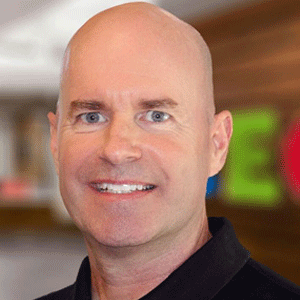THANK YOU FOR SUBSCRIBING

Hybrid Clouds can Open Possibilities for Data Management
Scott Musson, VP-Global Strategic Alliances, Red Hat


Scott Musson, VP-Global Strategic Alliances, Red Hat
Stephen Covey, author of the book ‘The Seven Habits of Highly Effective People,’ once said “There are three constants in life...change, choice, and principles.”
Chances are he wasn't talking about CIOs, but he may as well have been. After all, over the past few years, CIOs have seen a lot of change, and many are faced with several choices, particularly when it comes to how to best manage that change. As such, they're struggling to hold onto their principles of maintaining organized, efficient IT operations.
At the root of it all is data, which has become enterprises' most valuable commodity. Every organization is driven by the type of data it collects, and the insight that can be gleaned from that data. CIOs can use it to help drive the overall direction of a company because it gives them very specific insight into what customers, partners, and others actually want from the company. It can also be used to gauge current and future trends, and set an enterprise up well for what lies ahead.
Check Out: Master Data Management Companies
It's also extremely difficult to get a handle on, because it's coming from all different directions. Organizations are no longer just compiling sales data; today, organizations are trying to corral details from a myriad of sources, including social media networks, customer analytics, and more.
In response, CIOs are faced with the need to re-architect their data centers. For many companies, it's no longer sufficient to rely on a proprietary environment, no matter how finely tuned it may be; those days are past. Managing the information age calls for a more open and flexible environment that can easily adjust to the needs of the business.
This is why the cloud has taken off like no other technology in recent memory. It provides multiple options—for storage, access to data, increased cost efficiencies, and more. The cloud exists and continues to grow not because it's a “nice to have,” but because
And yet, even the cloud presents CIOs with certain quandaries and additional complexity, particularly when it comes to determining whether to build public or private clouds. This is something that many CIOs struggle with, because there appears to be very distinct advantages to both. On the one hand, public clouds offer capital expense benefits and the potential for greater elasticity at peak data times. On the other, private clouds would appear to offer security and scalability.
This is a problem that companies like mine, Red Hat, and our partner, NetApp, are working towards solving. We're basing that work on one simple understanding: that the truth, as we so often see, lies somewhere in between.
“NetApp had the foresight to support open source software years ago, before the cloud really took off and open source became a fixture within many enterprise IT organizations”
In reality, most CIOs will actually need a combination of public and private clouds at one time or another, and want to switch between the two as the need arises. This hybrid approach covers all the bases, and speaks directly to CIOs' primary needs: solving their businesses problems while setting the organization up well for the future.
This open hybrid cloud approach is representative of today's transformed IT environment. We're seeing a greater number of organizations turn away from legacy systems and software and embrace technology that is designed to be highly flexible and open. This includes software that provides CIOs and their teams with an easier pathway to the cloud, and the power to easily adapt to changing requirements.
Hybrid clouds, built on open source technology like OpenStack, are a perfect example; they don't tie businesses into a single approach, but make it possible for them to benefit from both. They literally open up many options for CIOs and their teams. Through hybrid clouds, IT can open or restrict data access as necessary. They can keep information locked down and secure while still making it available. And they can allocate data center resources for maximum efficiency.
Developing solutions that help organizations achieve these results is not something that can adequately happen over the course of a few months, or even years. It takes long-term relationships between companies that understand the needs of CIOs, and how to address those needs.
In the case of Red Hat and NetApp, the solutions have been the fruit of a relationship that has grown and evolved over more than a decade. It's a collaboration that has been highly beneficial to many, many enterprises, because it's one forged by two companies with a shared commitment to building the best possible cloud and storage solutions through open source software.
Storage has always been NetApp's bailiwick, of course, and it's only natural that the company should be a major player in the cloud space as well. What's interesting is that NetApp had the foresight to support open source software years ago, before the cloud really took off and open source became a fixture within many enterprise IT organizations.
Today, Red Hat and NetApp continue to work together to address CIOs' needs of the present. More so than ever, those needs center around very diverse storage requirements and the desire for flexible cloud environments.
These days, that's just about everyone.











